Arms and Armor of the Abyssinian Empire
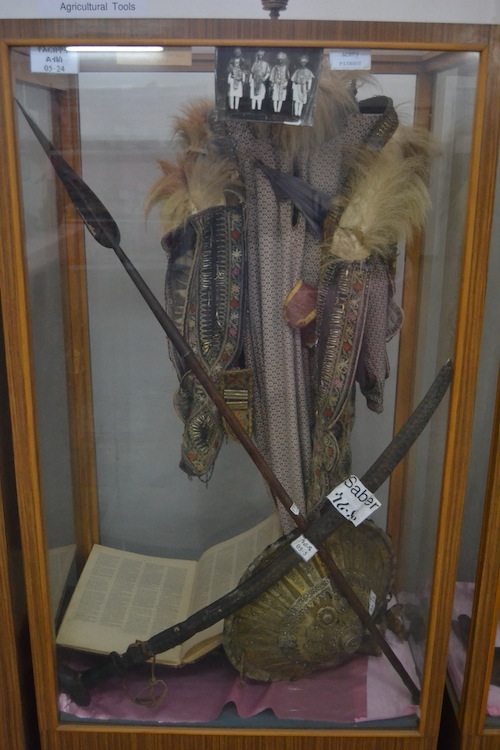
In a previous post, we looked at the ancient empire of Axum in what is now Ethiopia. Abyssinia, as it was often called, continued to be a strong and more or less centralized power throughout the historical period and into the twentieth century.
A good agricultural base and being at the nexus of several trade routes made the land prosper, and a succession of emperors ruled over the feudal lords. Like with early medieval kings in Europe, their ability to unify the lords into a common cause varied depending on the personal strength and intelligence of the individual rulers.

If the Negus negasti (“King of Kings” or Emperor) wanted to call his troops to battle, he’d send messengers across Abyssinia to announce a kitet, or call to arms. The messengers would beat drums to gather people in marketplaces in every town and village, and then announce when and where the warriors should meet. The kitet worked best when there was some common foe, an external enemy who threatened everyone. Like all feudal armies, with their troops being farmers most of the time, campaigns tended to be short. Abyssinian generals preferred large showdown battles that would decide the matter quickly. Drawn-out campaigns stretched supply lines and threatened to ravage the very land they were trying to defend.

Spears were the most common weapons and came in many varieties. Ethiopia is a multi-ethnic land with numerous tribes, each with its own style of craftsmanship. The spears were generally about six feet long and every Ethiopian would know how to use one, since in peacetime they were used to protect flocks from predators. Even today you can occasionally see farmers carrying spears.
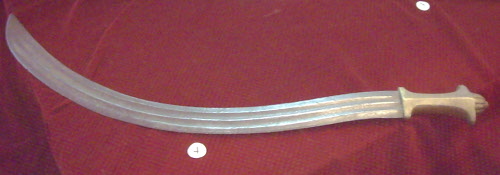
The most distinctive Ethiopian weapon was the shotel, a curved sword. While it looks like an Arab scimitar, it differed by usually having the sharp edge on the inside of the curve. The curve allowed the wielder to hook around his opponent’s shield. I’ve examined a number of antique shotels and discovered that some actually do have the sharp edge on the outside like a scimitar, while others are sharpened on both edges. Having a sharpened inside edge is the most common, however.
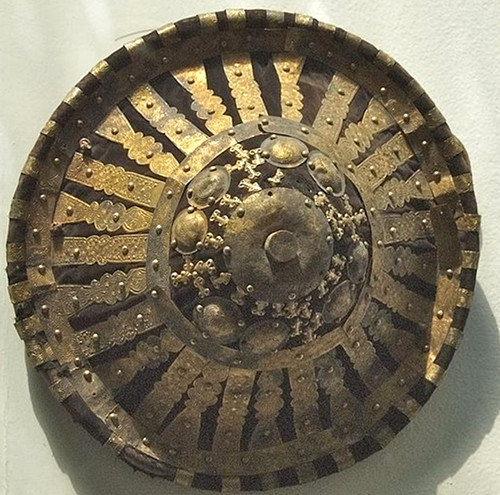
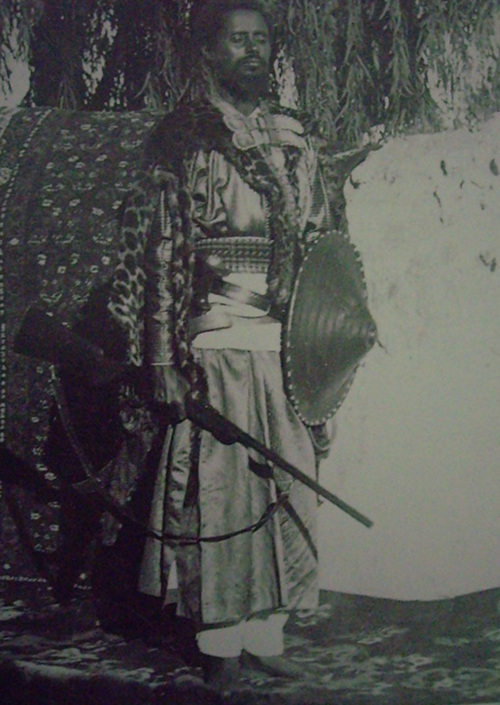
Ethiopian warriors rarely wore armor, but the shield was common. These were generally small, round, and conical. They were made of hard leather covered with colored velvet on the front. Wealthier warriors would decorate their shields with elaborately embossed strips of brass, tin, or precious metals.
Like the Somali civilizations on the coast, the Ethiopians were quick to see the advantage of firearms. By the time the Italians tried to invade Ethiopia in the late nineteenth century, many warriors carried bolt-action rifles.
The Italians consistently underestimated their Abyssinian opponents, assuming them to be disorganized savages. When the Italian fort at Mekele was besieged by the Emperor Menelik’s army in January, 1896, the defenders shot off signal rockets and sent up an observation balloon, thinking these technological wonders would scare off the natives. The Abyssinians were, indeed, impressed, but they soon saw that these things were doing them no harm and continued the siege. The garrison eventually had to surrender.
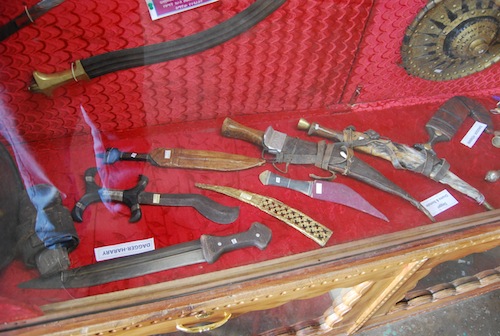
The following month came the famous Battle of Adowa, where the invading Italian army met Menelik’s main force. The Ethiopians had 42 artillery pieces, some machine guns, plenty of good rifles, and numerical superiority. The Italians, on the other hand, blundered into a bad position where steep mountains broke their army into three and they got wiped out.
This defeat kept Ethiopia free and led to a fall of the Italian government. In the 1930s, Mussolini made taking Ethiopia a point of national pride and returned with tanks, airplanes, and poison gas. This time the Ethiopian army under Emperor Haile Selassie was outmatched and defeated, leading to a brief colonial period during which Ethiopian resistance groups continued to fight in the countryside. The Italians were kicked out by a joint British and Ethiopian force during World War Two.
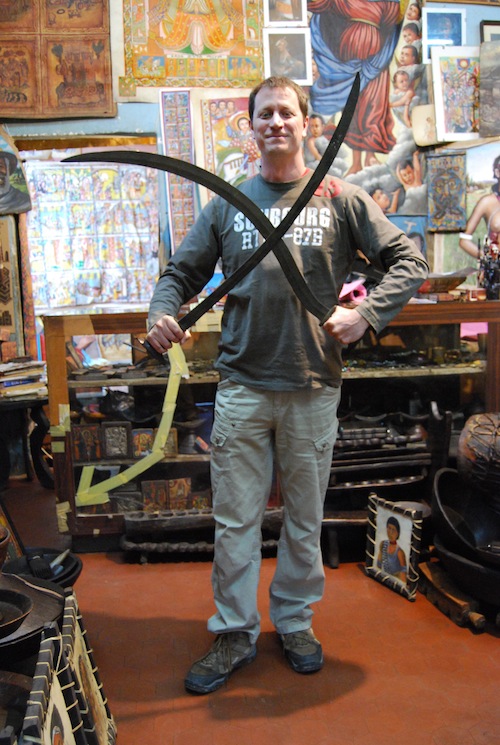
All photos copyright Sean McLachlan unless otherwise noted.
Sean McLachlan is a freelance travel and history writer. He is the author of the historical fantasy novel A Fine Likeness, set in Civil War Missouri, and several other titles. His most recent novel, Trench Raiders, takes place in the opening weeks of World War One. His historical fantasy novella The Quintessence of Absence, was published by Black Gate. Find out more about him on his blog and Amazon author’s page.
Very cool stuff, great job with the photos!
[…] week we looked at some of the arms and armor of the Abyssinian Empire. With the holidays coming up, I decided to do something a bit more peaceful. On my trips through […]
[…] Arms and Armor of the Abyssinian Empire […]
Thank you for these pictures. They were very helpful references for a polymer clay art project.
Great pictures! I remember as a kid camping at Lake Longono having a tribesman letting me throw his spear. He was a crack shot with it himself. He was sharpening it with a piece of pumice rock when I met him. The lake there is a highly volcanic area. There were boiling pools of water with eggshells strewn about where the Ethiopians boiled thier eggs. In the lake while swimming along you would come up on very warm area where hot springs were welling up off the bottom. Onshore in many spots you could feel the ground vibration under you. Amazing memories! The spear in the picture looks identical to what I remember. I have two spear heads I found many years later of that type from Ethiopia.
I have many pictures from when I grew up there as well. If you are interested please email me and perhaps I could share some of them with you.